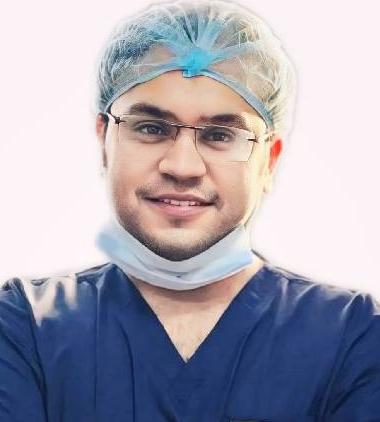Microdiscectomy Surgery: Benefits, Procedure and Recovery

Treatment Duration
45 Minutes
------ To ------60 Minutes
Treatment Cost
₹ 75,000
------ To ------₹ 2,50,000

Table of Contents
- What is Microdisectomy?
- Conditions treated with Microdisectomy
- Who needs Microdisectomy?
- How is Microdisectomy performed?
- What Can You Expect Before the Surgery?
- What Can You Expect After the Surgery?
- What are the benefits of Microdisectomy?
- Risks and Complications of Microdiscectomy
- Risks of Delaying Microdiscectomy
- Cost of Microdisectomy
Loading...
Traditionally, spinal surgery meant having large incisions, severe risks, and a longer recovery time. But thanks to surgical advances, spinal surgeries can now be performed as minimally invasive procedures. Microdiscectomy, also known as microdecompression, is a surgical procedure performed to treat herniated lumbar disc. During this minimally invasive procedure, the surgeon removes the herniated portion of the disc to relieve pressure on the spinal nerve root.
Surgery Name |
Microdisectomy |
Alternative Name |
Microdecompression |
Disease Treated |
Sciatica, Leg pain not resolving with medicines |
Benefits of the Surgery |
Less pain, Quicker recovery time, Lower risk of infections Reduced stay in Hospital (24 hours), Minimally Invasive |
Treated By |
Spine Surgeons |
You can check Microdiscectomy Surgery Cost here.
What is Microdisectomy?
To relieve pressure on a lumbar nerve caused by a herniated disc in the lower back, a surgical procedure called microdiscectomy is performed. It is also known as Microdecompression.
The procedure's objectives are to reduce discomfort, increase mobility, and assist you in regaining your ability to sit, stand, and walk normally.
The procedure's objectives are to reduce discomfort, increase mobility, and assist you in regaining your ability to sit, stand, and walk normally.
Anatomy and Physiology
- The lower back comprises the lumbar spine, consisting of 5 vertebrae, marked L1 to L5.
- It starts below the last thoracic vertebrae (T12) and ends at the top of the sacrum (S1).
- There are discs between each vertebra, acting like cushions or shock absorbers.
- Each of these discs is made of a gel-like inner substance called the nucleus pulposus, and a tough circular exterior called the annulus fibrosus.
- A disc becomes herniated when a portion of the nucleus pulposus leaks through a crack in the annulus fibrosus.
Expert Doctors (10)
NABH Accredited Hospitals (10)


Conditions treated with Microdisectomy
Leg pain due to disc herniation generally improves within almost six to twelve weeks. However, despite nonsurgical treatments, if the pain is severe and makes it difficult to sleep, work, or engage in daily activities, you may need a microdiscectomy before six weeks. The reasons for recommending a microdiscectomy include:
- Leg pain not resolving with medicines
- Sciatica (leg pain) is the main symptom, rather than lower back pain
- Tingling, numbness or weakness in legs
- Urinary or Bowel symptoms
- Nonsurgical treatments like NSAIDs, oral steroids, and physical therapy did not bring sufficient pain relief.
Who needs Microdisectomy?
Sometimes injections, medication, and other conservative procedures may not always be effective in treating disc-related back pain. In such cases, a Microdiscectomy is performed. The candidate who needs a Microdiscectomy could be suffering from:
- Damaged Spinal Disc
- Failed Back Surgery
- Herniated Disc
- Pinched Nerve
- Radiculopathy
- Disc Degeneration
- Lower Back Pain
- Sciatica
How is Microdisectomy performed?
Microdiscectomy surgery is performed under general anaesthesia. The steps involved in the surgery include the following:
- The surgeon makes a one to one-inch incision in the midline of your lower back.
- They lift the back muscles off the spine's lamina, moves them aside, and holds them there with a retractor.
- The surgeon then removes a small portion of the bone over the nerve roots to enter the spine.
- They may use a lighted microscope to visualise the affected area clearly.
- Next, the nerve roots are gently moved aside.
- The surgeon uses small instruments to gain access under the nerve root and remove the damaged herniated tissue.
- They move back the muscles into place and closes the incision with stitches or sutures.
What Can You Expect Before the Surgery?
- Your doctor will advise you for a pre-anaesthetic checkup.
- They will enquire about your medical history and the medicines, supplements, and herbs you are taking.
- You may need to stop taking specific NSAIDs and blood thinners like aspirin one week before the surgery.
- The doctor may order imaging tests of your spine, such as an MRI.
- Do not eat or drink anything after midnight on the night before the surgery.
- Your doctor will briefly explain the procedure, risks, estimated cost, and insurance formalities.
- Make sure to have a friend or relative take you home after the surgery.
What Can You Expect on the Day of the Surgery?
- On the day of the surgery, the hospital staff will ask you to sign consent formalities, giving your permission for the procedure.
- The team will inform you about changing clothes into a hospital gown and removing jewellery pieces.
- Someone from the team will shave excess hair at the surgical site.
- The doctor will record your last meal and might give you a medication to be taken with a sip of water.
- After the anaesthesiologist monitors your vitals, the team will shift you to the OT room.
What Can You Expect During the Surgery?
- Your healthcare team will make you lie face down on the operating table in the OT room.
- The anaesthesiologist will start an IV line for medications and fluids in your arm or hand.
- You will be given general anaesthesia.
- The medical team will clean the incision site with an antiseptic solution.
- The anaesthesiologist will monitor your vital signs throughout the procedure, including breathing, blood pressure, and heart rate.
- The surgeon will make one small cut in your lower back.
- He/she will perform the surgical procedure and remove the herniated portion of the skin.
- Lastly, he/she will close the incision with stitches.
- The complete procedure will take about one to two hours.
What Can You Expect After the Surgery?
In the hospital
- After the surgery, the team will shift you to the recovery room to monitor your vitals and examine the effect of anaesthesia.
- You should avoid bending and sitting for prolonged periods immediately after the surgery.
- You can expect to get discharged from the hospital the same day or within 24 hours.
- Before discharge, you will meet with a physical therapist who will instruct you on reducing twisting, bending, and lifting with your back.
- They will tell you exercises that can help you improve the flexibility and strength of the muscles around your spine.
- The doctor will provide home care and follow-up instructions.
At home
Wound care- The doctor will provide instructions to keep the surgical site clean and dry.
- You can shower immediately after the surgery but cover the wound with a bandage or tape to avoid water hitting directly over the incision site.
- You should continue with the therapy exercises recommended by the physical therapist.
- You can slowly resume physical activities two to four weeks after the surgery.
- Do not lift heavy objects for two to four weeks after the surgery.
- Avoid driving or sitting for prolonged periods.
- You may need to remain absent from work for the first or two weeks after the surgery.
- You may experience surgery-related pain for two weeks after the procedure. The doctor will prescribe medications to manage the pain.
- You will generally experience leg pain relief immediately after the procedure.
- The nerve root may take weeks or months to heal entirely and subside any weakness or numbness in the leg and foot.
- Generally, full recovery takes about six weeks.
First Follow-Up Appointment
- Your doctor will schedule the first follow-up appointment 8 to 10 days after the surgery.
- During the visit, they will inspect the surgical site and remove the stitches. They will also provide other home care and follow-up instructions.
What are the benefits of Microdisectomy?
A microdiscectomy helps relieve pain and weakness caused by severe nerve compression. Microdiscectomy has several benefits over an open discectomy, which include:
- Less pain
- Quicker recovery time
- Lower risk of infections
- Reduced stay in Hospital (24 hours)
- Minimally Invasive
- Less Tissue Damage
Risks and Complications of Microdiscectomy
Complications in microdiscectomy are rare. However, like any other surgery, there are some risks. The common side effects include:
- Bleeding
- Infection
- Pain that persists after surgery
- Anaesthetic complications
- A dural tear (a tear in the outermost layer of connective tissue that surrounds the brain and spinal cord) in one to seven per cent of surgeries
- Recurrent disc herniation
- Nerve root damage
- A possible buildup of fluid in the lungs, leading to pneumonia
- Bowel or bladder incontinence
- The sequelae of not treating the complications in time include:-
- Dural tears can lead to a cerebrospinal fluid leak, increasing the risk of contracting spinal meningitis
When to Call Your doctor?
Call your healthcare professional if you experience:- Fever or chills
- Severe pain even after taking medications
- Redness or swelling at the incision site
- Excessive drainage from the incision site
- Loss of bowel or bladder control
Risks of Delaying Microdiscectomy
If the treatment is delayed, the pressure and swelling of the nerves at the spinal column end can result in paralysis and other permanent impairments. A delay in microdiscectomy can also lead to:
- Loss of bladder or bowel control
- Severe lower back pain
- Numbness in the saddle area
- Paralysis or Weakness in both legs
- Persistent pain, limping while walking
Cost of Microdisectomy
The cost of arthroscopy ranges from ₹75000 to ₹250000. The cost varies based on the following factors:
- Type of Microdiscectomy Surgery
- Age of the patient
- The medical condition of the patient
- The type of hospital facility availed - individual room or shared.
| Procedure Name | Cost Value |
| Microdisectomy | ₹75000 to ₹250000 |
Last Updated on: 9 November 2022
Disclaimer: The information provided here is for educational and learning purposes only. It doesn't cover every medical condition and might not be relevant to your personal situation. This information isn't medical advice, isn't meant for diagnosing any condition, and shouldn't replace talking to a certified medical or healthcare professional.
Author
HexaHealth Care Team
HexaHealth Care Team brings you medical content covering many important conditions, procedures falling under different medical specialities. The content published is thoroughly reviewed by our panel of qualified doctors for its accuracy and relevance.
Loading...






















